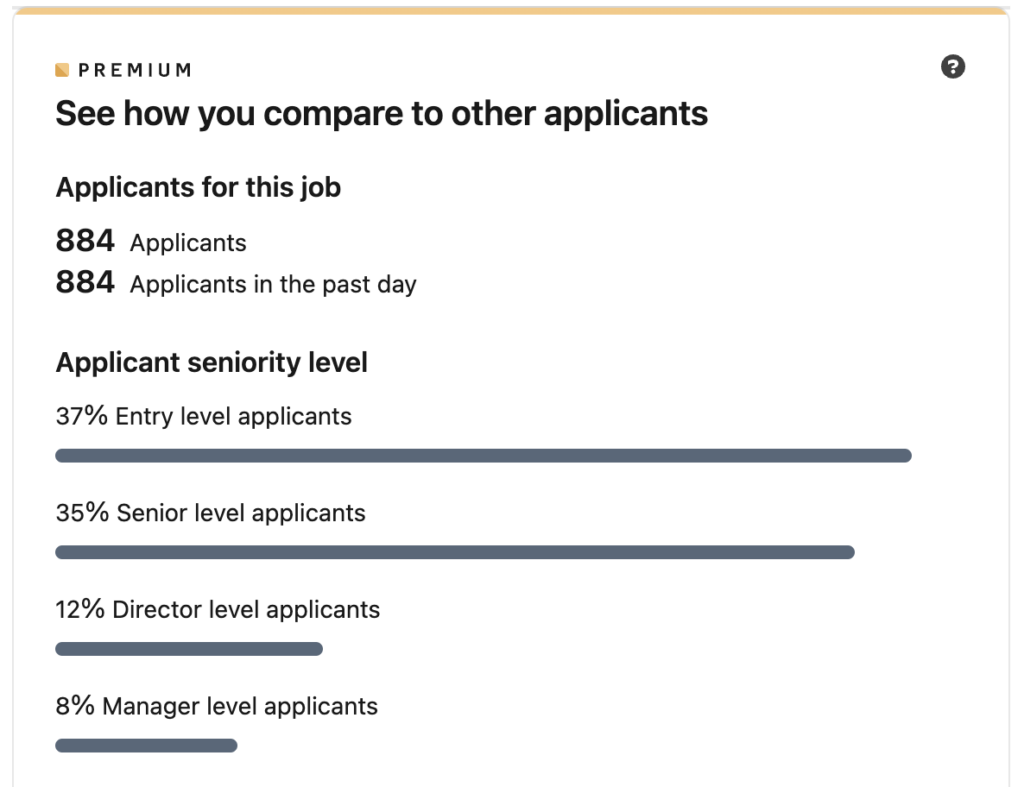Have you submitted hundreds or even thousands applications after losing your tech job, and nothing? Maybe you’ve been searching for months or even a year, and all you can get is a few phone screening interviews that are very selective this days. You are not alone, the tech job market has been brutal since 2023.
But what if I told you that you could land a job in 2-3 months, if you’re willing to make some big changes? The key: Forget remote work. Accept hybrid or in-person roles. And be willing to relocate anywhere in the U.S. on your own dime. Go to the first place that offer you a job!
That means, if the job offer comes from New York, Chicago, Seattle, Boston, or even Knoxville, Toledo, Omaha, or Santa Fe, you pack your stuff and move! But first, to get the interview and secure that job, you need to apply as a local in each market individually.
This is especially crucial for H-1B professionals at risk of losing their visa status, as they must secure a job with a willing sponsor as quickly as possible. But this job might be not available remotely or in the city you are staying.

A Real-Life Example & Success Story
Back in 2009, during the Great Recession, my advertising agency in Boston needed a video editor. We posted the job online (on Monster at the time) and received over 1,500 applications in a week, applications came from all over the country and many people were desperate, former C-Level and VP’s applying for mid-level position.
Since we needed someone to be in the office, we only considered local candidates. And honestly, we didn’t even look at resumes if they were from outside of Massachusetts and maybe New Hampshire. One applicant stood out, did well on phone screen, and we invited him to come twice to the office for in-person interviews. We hired him and he started 2 weeks later. But only after he started did we learn he was actually from Florida, one of the hardest-hit states during the recession, and relocated with his wife to Massachusetts the moment we gave him an offer.
He had used a friend’s Boston address to appear as local candidate. He flew from Florida for both interviews at his own expense. Once he got the job, he relocated with his wife. Three years later, when the market improved, he got another job and moved to a warmer state.
Had he used his real Florida address, we never would have considered him, just like the other 1,500+ out-of-state applicants. But he did smart, he applied all over the country but changed his address to appear local to the areas where he applied.
Why This Strategy Works for Finding a Job
If you’ve been applying to remote jobs, you’ve probably seen how competitive it is. A single opening gets hundreds of applications within a day, and over 1,000 within a week (you can see this data on LinkedIn Premium job postings). It’s because everyone in the country (even world) applying to the same available job. So, that’s official, remote jobs for tech workers are dead!

For example, for Java software engineers, some estimates suggest it takes 100-300 applications just to get one phone screening interview.
But for local hybrid or in-person roles, your chances improve dramatically. These jobs receive fewer applications, and companies still prefer local candidates who can commute. That’s why positioning yourself as a local is critical.
However, with today’s job market, those local jobs don’t appear very often, sometimes only few per week. But across the nation, it’s hundreds each week, meaning, you can apply in a lot of places, and by presenting yourself as a local, you have much better chance to be considered because they are only looking for 20-25 miles radius.
How to Apply for a Job as a Local in Multiple Cities
- Create a separate resume for each city.
- Use a local address, a friend’s, family’s, or even a long-term stay hotel or hostel. You can list only the city and state, no need to post full address. (Recruiters don’t verify addresses.)
- Update your last job’s location to match the city you’re applying to. For a recruiter or hiring manager it will look like your last job was in the city you are applying. You can always say that you worked remotely if asked, but normally they don’t.
- Adjust your summary to say: “Looking for software engineering opportunities in [City].”
- Keep your phone number the same, many people retain their old numbers after moving, no need to have a local number for each location.
- Prepare a relocation story for the phone screen (if asked). Say you just moved for family, a partner, or another personal reason.
Once you do this, you apply all over the US using the same resume but different addresses / cities to match locations. As you do this, you’ll start getting phone screening invitations. One might come from Austin, days later from Nashville, and another from San Francisco. If the recruiter doesn’t ask you about your location, great. If they do, be ready with a response about how you’ve recently relocated.
Just don’t make a mistake on a video prescreening interview by showing your window with palm trees, mountains or snow outside… and make sure you know the Time Zone you are in 🙂
Closing the Deal, Traveling for the Interview
- If invited for an in-person interview, fly there! Companies don’t bring in many candidates at this stage, so your chances of getting hired are high.
- You’ll give them your availability to come to the office, so check the best days and prices to fly and give them those days.
- You might have to fly 2-3 times to the same company, visit multiple cities and get rejections, but eventually, this is how you land a job faster.
- It’s still better than being unemployed for a year or more.
Key Takeaways
- Applying as a local for hybrid and in-person office positions significantly increases your chances of getting interviews.
- Use a local address (friend, family, hotel, or hostel).
- Change your last job’s location to match the city you’re applying to.
- Mention in your summary that you’re looking for roles in that city.
- Have a relocation story ready for interviews.
While remote tech jobs are flooded with applicants, hybrid and in-person roles are hard but still easier to land, especially if you’re flexible.
Accepting a Job in Another City and Commuting
Real story, a software engineer from New York was laid off right after having a baby and buying condo with his wife. After months of unsuccessful job hunting, he used this strategy of applying as local in different cities, and landed a hybrid role in Charlotte, paying $40K more than his previous job. Since the new position requires him to be in the office three to four days per week, he now lives in NY, flies there every week, and uses the extra income to cover travel expenses. Initially, he stayed in hotels, but he has since rented a small room in Charlotte with a roommate, making the arrangement more affordable.
Conclusion
Think of yourself like a professional athlete. You might want to play in fun places like New York, Miami, San Francisco, or LA, but sometimes, the opportunity is in Buffalo or Green Bay. You go where the opportunity is.
And that’s how you get back into the job market fast! Good luck!




